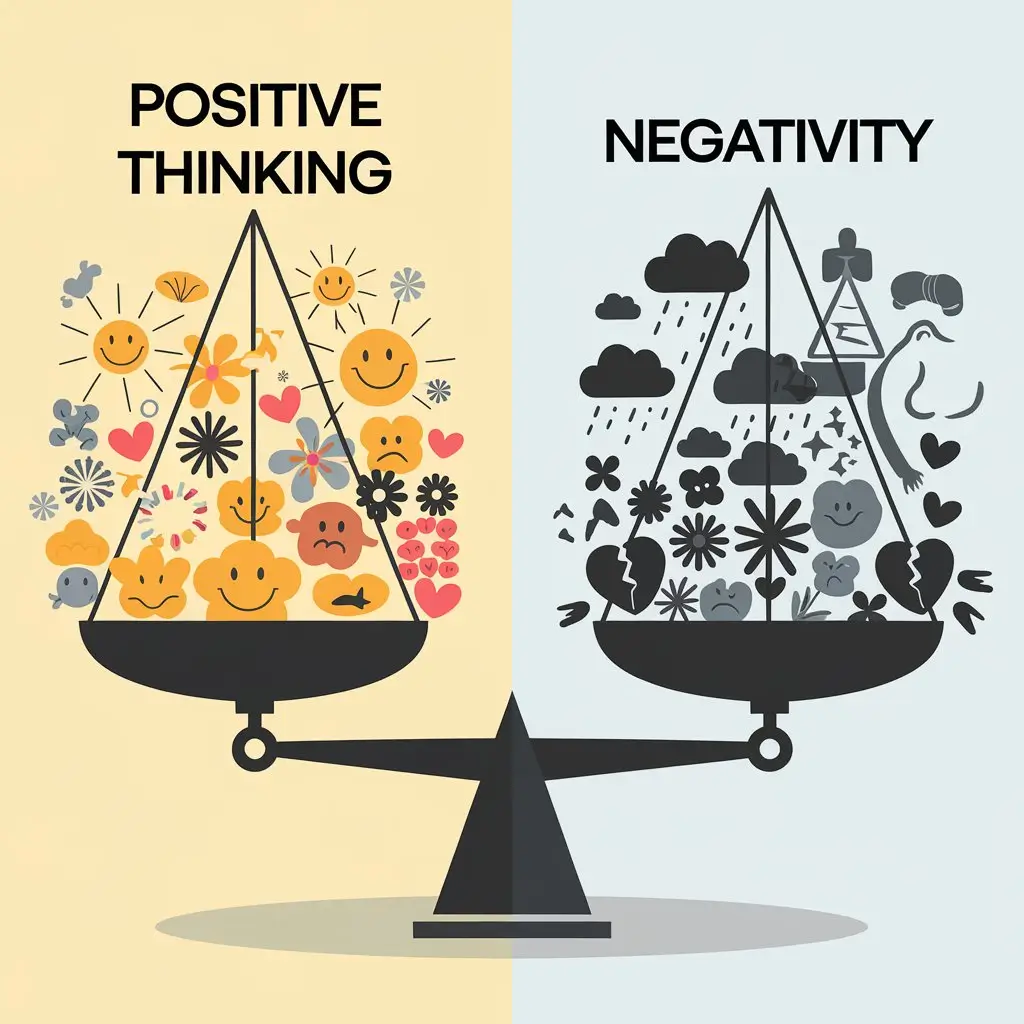Manifesting and the Law of Attraction have gained popularity as powerful tools for personal growth and self-improvement. These concepts suggest that our thoughts, beliefs, and emotions can shape our reality and help us achieve our goals. In this article, we will explore the principles of manifesting, the Law of Attraction, and practical steps you can take to harness these concepts for your personal development journey.
Understanding Manifesting
Manifesting is the art of bringing your desires and goals into reality through the power of intention, thought, and emotional alignment. It is based on the belief that our thoughts and feelings can influence the circumstances of our lives, allowing us to attract what we want. Understanding the nuances of manifesting is essential for anyone looking to leverage this powerful practice for personal growth and fulfillment.
The Foundations of Manifesting
- Intention Setting: At the core of manifesting is the process of setting clear intentions. Intentions are not mere wishes; they are specific, focused desires that you are committed to bringing into reality. This requires not only identifying what you want but also understanding why you want it. A strong “why” fuels your motivation and commitment to the process.
- Every aspect of the universe consists of energy vibration which encompasses thoughts and emotions at particular frequencies. Manifestation requires you to focus on the frequency level that matches your desired goals. Positive thoughts operating at high frequencies draw comparable energies to themselves. Your desires will repel you when your energy vibration decreases because of negative thoughts. Best results in manifestation occur because of an understanding of the universal energy dynamic.
- The Power of Belief: Beliefs shape our perceptions and experiences. To manifest effectively, you must believe that what you desire is possible and that you are deserving of it. Limiting beliefs, such as feelings of unworthiness or doubt, can act as barriers to manifestation. Therefore, part of the manifesting process involves identifying and transforming these limiting beliefs into empowering ones.
The Manifestation Process
- Clarity: The first step in the manifestation process is gaining clarity about your desires. This involves introspection and self-discovery. What do you truly want in life? What are your passions, dreams, and aspirations? Clarity ensures that your intentions are focused and specific, which is essential for successful manifesting.
- Visualization: Visualization is a powerful technique that plays a significant role in manifesting. It involves creating a mental image of your desired outcome as if it has already been achieved. This practice not only helps you connect emotionally with your goals but also sends a clear signal to the universe about what you wish to attract. Engaging all your senses during visualization enhances its effectiveness.
- Emotional Alignment: Emotions are a critical component of the manifesting process. You must cultivate feelings that align with your intentions. For example, if you are manifesting abundance, you should embody feelings of gratitude, joy, and fulfillment. This emotional alignment raises your vibrational frequency, making it easier to attract your desires.
- Taking Inspired Action: Manifestation is not solely about positive thinking; it also requires action. Taking inspired action means responding to opportunities and intuitions that arise as you pursue your goals. Your commitment toward receiving your desired goal emerges through this process. It’s essential to remain open and willing to step outside your comfort zone when opportunities present themselves.
Overcoming Challenges in Manifesting
- Limiting Beliefs: One of the most significant challenges in manifesting is overcoming limiting beliefs. People develop these beliefs due to their previous encounters or social conditioning processes or internal uncertainty. To manifest effectively, you need to identify these beliefs and actively work to replace them with empowering affirmations that reinforce your worthiness and capability.
- Fear and Doubt: Fear of failure or doubt about your ability to manifest can create resistance. Acknowledge these feelings but don’t let them control your actions. Practicing mindfulness and self-compassion can help you navigate these emotions, allowing you to maintain focus on your intentions.
- Patience and Trust: Manifesting is often a process that takes time. It requires patience and trust in the universe’s timing. Impatience can lead to frustration and negative thinking, which can obstruct the manifesting process. Cultivating a mindset of trust allows you to let go of attachment to specific outcomes, which can enhance your ability to attract what you desire.

The Role of Mindset in Manifesting
- Positive Mindset: A positive mindset is crucial for effective manifesting. This involves cultivating optimism, resilience, and a can-do attitude. Surround yourself with positive influences, engage in uplifting activities, and practice self-affirmation to reinforce a positive outlook.
- Gratitude Practice: Incorporating gratitude into your daily routine can significantly enhance your manifesting efforts.Gratitude helps you transition your attention from deficiencies to existing accomplishments, thus generating a feeling of satisfaction. This practice not only raises your vibration but also attracts more positive experiences into your life.
- Mindfulness and Awareness: Being mindful of your thoughts and emotions allows you to identify negative patterns that may hinder your manifesting efforts. Mindfulness practices such as meditation can help you cultivate awareness and maintain a positive focus, aligning your energy with your desires.
The Law of Attraction Explained
The Law of Attraction is a foundational concept in the realm of personal growth and self-improvement. It posits that our thoughts, feelings, and beliefs have the power to shape our experiences and realities. This principle asserts that like attracts like; therefore, the energy we emit, whether positive or negative, will attract similar energies back into our lives. Understanding and harnessing the Law of Attraction can help individuals manifest their desires and create a more fulfilling life.
The Core Concepts of the Law of Attraction
Thoughts Become Things: At the heart of the Law of Attraction is the idea that our thoughts have a tangible impact on our reality. This means that what we consistently think about, we draw into our lives. If you focus on positive, empowering thoughts, you are more likely to attract experiences that reflect those thoughts. Conversely, negative thinking can lead to undesirable outcomes. This concept encourages individuals to cultivate a mindset that aligns with their goals and aspirations.
Vibrational Match: Everything in the universe, including our thoughts and emotions, operates at a certain frequency or vibration. When you align your thoughts and emotions with the frequency of your desires, you become a vibrational match for those experiences. For instance, if you want to attract love, you should embody the feelings of love and joy, allowing yourself to resonate with that frequency. This alignment creates a magnetic pull towards your desires, making it easier for them to manifest in your life.
Visualization: Visualization is a powerful tool within the Law of Attraction. It involves creating mental images of your desires as if they have already been achieved. By vividly imagining your goals and engaging all your senses in the process, you reinforce your belief in their possibility. Visualization helps to solidify your intentions and sends a clear message to the universe about what you wish to attract. It also helps you to emotionally connect with your desires, which enhances your vibrational alignment.
Emotional Guidance System: Your emotions serve as a guide in the manifesting process. Positive emotions, such as joy, love, and gratitude, indicate that you are aligned with your desires, while negative emotions can signal a disconnect. Recognizing and addressing these emotions is crucial for maintaining a positive mindset. By cultivating positive feelings and addressing limiting beliefs, you can elevate your vibrational frequency and improve your ability to manifest your goals.
Belief and Expectation: Central to the Law of Attraction is the necessity of belief. You must truly believe that what you desire is possible for you. This belief shapes your reality and influences your actions. When you expect positive outcomes and hold a strong belief in your capabilities, you are more likely to take actions that align with those expectations. This creates a self-fulfilling prophecy, where your beliefs and expectations become the driving force behind your experiences.
Practical Applications of the Law of Attraction
Because the Law of Attraction works best when using defined and detailed goals users should begin by setting their intentions. Set clear intentions for different life areas, including profession, partnerships and wellness and self-development. Higher clarity about your intentions leads to better focus for achieving their manifestation.,
Maintaining a Positive Mindset: Focus on cultivating a positive mindset by engaging in practices that uplift you. Affirmations, gratitude journaling, and surrounding yourself with positive influences can enhance your overall outlook. The more positive energy you radiate, the more likely you are to attract similar energy.
Creating Vision Boards: Vision boards are a visual representation of your goals and desires. By compiling images, words, and symbols that resonate with your aspirations, you create a tangible reminder of what you wish to manifest. Regularly viewing your vision board can help reinforce your intentions and keep you motivated.
Mindfulness and Presence: Being present and mindful allows you to manage your thoughts and emotions more effectively. Practicing mindfulness helps you become aware of negative thought patterns and empowers you to shift your focus to positive thoughts that align with your goals.

Taking Inspired Action: While the Law of Attraction emphasizes the power of thoughts, it’s essential to complement your intentions with action. Be open to opportunities that arise and take steps toward your goals. This demonstrates your commitment to manifesting your desires and signals to the universe that you are ready to receive.
Practical Steps for Manifesting and Using the Law of Attraction
Harnessing the power of manifesting and the Law of Attraction requires intentional practice and commitment. Here are practical steps you can take to effectively apply these concepts in your daily life:
1. Set Clear Intentions
Define Your Goals: Begin by taking time to reflect on what you truly desire. Write goals using specific wording by considering career targets alongside relationship objectives and health targets, and personal advancement achievements. The more precise you are, the clearer your intentions will be.
Structure your intentions using positive statements that convey your intentions properly. Instead of saying, “I don’t want to feel anxious,” rephrase it to something like, “I am calm and confident.” This positive wording helps align your thoughts with your desired outcomes.
2. Practice Gratitude
Daily Gratitude Journaling: Start a gratitude journal where you write down three to five things you are thankful for each day. This practice shifts your focus from what you lack to what you already have, creating a mindset of abundance.
Express Gratitude for Future Desires: As you write in your journal, express gratitude for the things you wish to manifest as if they have already happened. For example, “I am grateful for my fulfilling job that brings me joy and success.” This reinforces your belief in the possibility of your goals.
3. Visualize Your Desires
Devote each day to visualize the objectives you want to achieve. Locate a distraction-free area after which you should shut your eyes while imagining the reality you wish to experience next. A complete sensory activation means you need to recognize all three senses of visual perception, hearing and physical elements. Your ability to vividly imagine something will boost the emotional power of your desired outcomes.
Use Vision Boards: Create a vision board by collecting images, quotes, and symbols that represent your goals. Place it somewhere you’ll see it daily to keep your intentions front and center, serving as a visual reminder of what you are working towards.
4. Affirmations
Craft Powerful Affirmations: Develop affirmations that reflect your goals and beliefs. These should be positive, present-tense statements that resonate with you. For example, “I am worthy of love and success,” or “I attract opportunities that align with my passions.”
Incorporate Affirmations into Your Routine: Repeat your affirmations daily, ideally in the morning or before bed. You can write them down, say them out loud, or even record and listen to them. Consistent repetition reinforces your beliefs and helps rewire your subconscious mind.
5. Take Inspired Action
Listen to Your Intuition: Pay attention to your gut feelings and intuitions regarding opportunities or changes you might need to make. The Law of Attraction works best when you align your actions with your intentions. Trust your instincts to guide you toward decisions that resonate with your goals.
users should divide their objectives into multiple pragmatic sequential steps. This makes your aspirations more manageable and allows you to celebrate small victories along the way, keeping you motivated and focused.
6. Let Go and Trust
Release Attachment to Outcomes: While it’s important to have clear intentions, try not to obsess over how and when your desires will manifest. Allow the universe to work in its own timing. Letting go of control opens the door for unexpected opportunities.
Practice Patience: Understand that manifestation is often a process that takes time. Stay committed to your practices and remain open to the journey. Trust that the universe is responding to your intentions, even if you can’t see the immediate results.
7. Surround Yourself with Positivity
Seek relationships with people who help boost your spirit and inspire you. Put yourself among communities dedicated to backing your goals. Establish relationships with groups of people who endorse your goals while having parallel objectives to yours. A positive environment will help you maintain your commitment to manifest your desired goals.
Limit Negative Inputs: Be mindful of the media you consume, including social media, news, and entertainment. Limit exposure to negativity, as it can dampen your energy and hinder your manifesting efforts.
8. Reflect and Adjust
Develop time for evaluating your progress while reviewing your targets. Do your original intentions remain consistent with the desires you had in the past? Do you need to tackle any existing restrictive thoughts? Your ongoing reviews enable you to make transmission adjustments which keep you on course.
Celebrate Your Achievements: Acknowledge and celebrate even the smallest manifestations. This reinforces your belief in the process and motivates you to continue practicing the Law of Attraction.
Conclusion
Manifesting and the Law of Attraction are powerful concepts that can significantly enhance your personal growth journey. By understanding these principles and applying practical strategies, you can create a life that reflects your true desires. Remember, the key lies in clarity, positive thinking, emotional alignment, and taking inspired action. Embrace these practices, and watch as you attract the life you envision.








